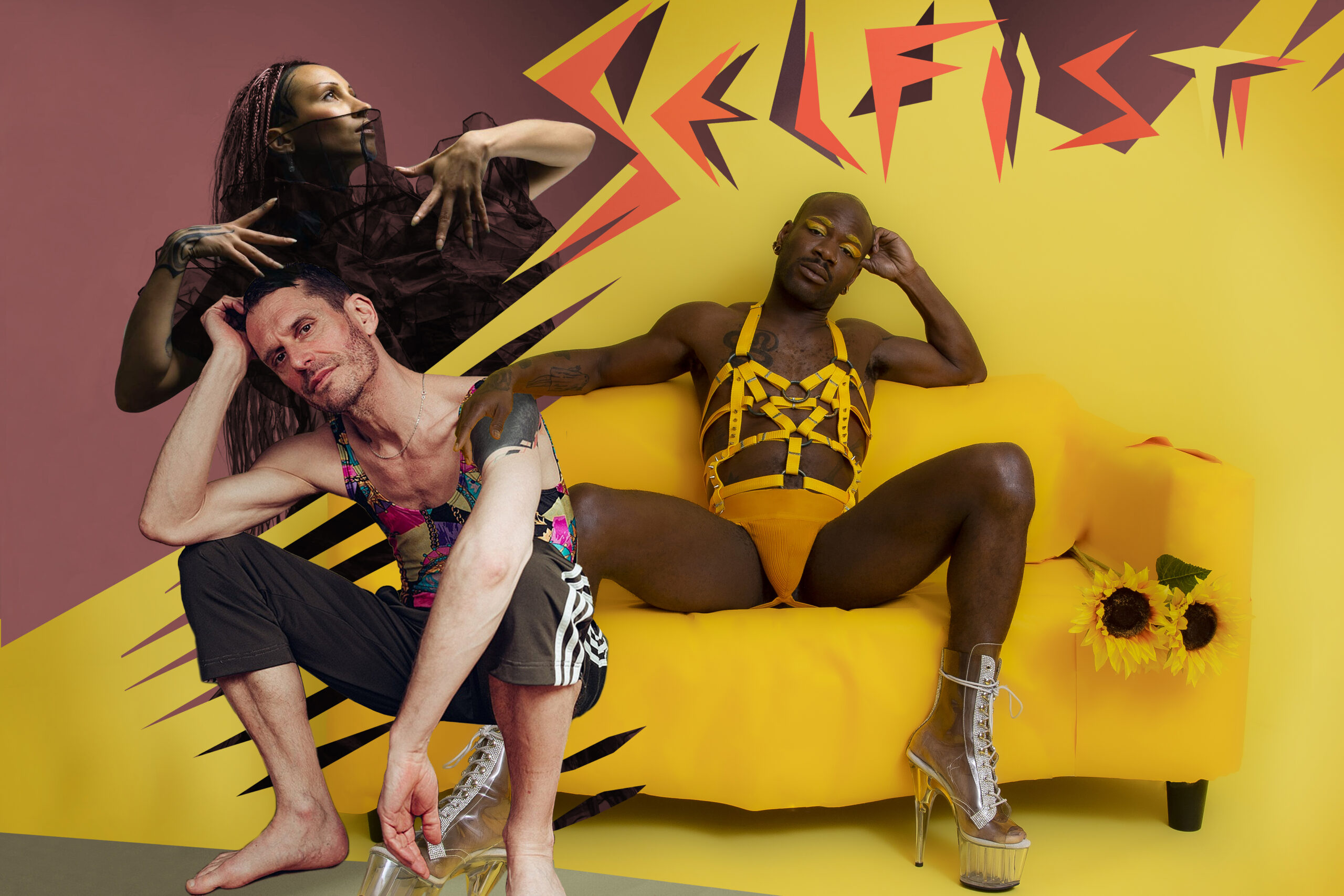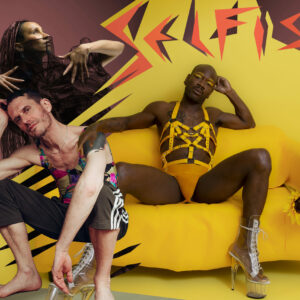What is old? There is a new way of looking at the body, the old body, the aged body. Covid has brought it into the foreground, shows like Germany’s Next Topmodel into the spotlight. In her musical-discursive format Salon Souterrain, which rethinks the bourgeois idea of the salon in the context of current debates regarding transformation, Elisabeth Tambwe and her guests explore the “silver economy” and the new hype around grey hair on plasticized and profitable bodies. In doing so, they ask the actually important question: What does it mean to grow old?
The myth of Narcissus, often reduced to a utilitarian cliché to denote selfishness and vanity, has been largely distorted from its original essence. What if we have misunderstood Narcissus? What if his obsession with his reflection was less a proof of superficiality than an act of existential survival?
In the narrative as it is transmitted to us, Narcissus falls in love with his image, to the point of withering away and dying. This behavior has been interpreted as an illustration of excessive self-love, a warning against individualism and excess. But this reading, although widespread, misses a deeper truth: Narcissus is not selfish; he is lost. Narcissus’s obsession with his reflection is not an act of vanity. He does not admire himself for what he is, but for what he seeks to understand. His prolonged gaze into the water reflects an existential quest: who am I?
In this reflection, he sees not just an image, but a question that haunts him. This frozen moment before the water becomes an attempt at exploration, a descent into himself. Narcissus is not captive to his image, but to his need to elucidate his identity in a fragmented and elusive world.
For Roland Barthes, in A Lover’s Discourse (1977), love is a space of suffering, waiting, and contradictions. The loving subject consumes itself in its obsession, just as Narcissus loses himself in the adoration of his reflection. Barthes describes the experience of love as an incessant quest for meaning, an internal dialogue fueled by desire, but often marked by the impossibility of resolving the contradictions that emerge from it. Similarly, Narcissus is trapped in an introspective loop: his reflection acts as a silent partner in this quest, a screen onto which he projects his inquiries.
This reinterpreted myth reveals a profound echo of our human condition. Each individual, like Narcissus, seeks to define themselves in a mirror, whether it be physical, social, or digital.
Social networks, for example, act as a contemporary reverberation of Narcissus’s pool: a place where one scrutinizes their often fragmented reflection.
Thus, Narcissus becomes a symbol of our inner fragmentation. His fascination with his image, wrongly interpreted as arrogance, actually reflects a thirst for unity and understanding. He is the archetype of the human being trying to piece together the scattered fragments of their identity in a mirror that never fully reflects the truth.
What if we considered Narcissus as an explorer rather than an egocentric? His failure, then, would not lie in his presumed self-love, but in the inability of the reflection to answer his questions. The water mirror offers only a surface, an appearance. What Narcissus seeks is depth, essence, the true echo of his being.
From this perspective, Narcissus is not just a tragic figure. He also reminds us that self-knowledge is a project that is both necessary and risky. In diving into the mirror, it is not about losing oneself in appearances, but about seeking to go beyond
Team
Performers: Bishop Black, Max Mayer, Sunny + (on screen guests recorded in advance: Elisabeth Bakambamba Tambwe, Nadia Beugré, It will be a fake life!!)
Video shooting: Eduardo Trivino Cely
Lighting: Svetlana Schwin
Music sound: t.b.a
Production: Indra Jaeger
BIOS
Bishop Black (performance/video/they/them)
Bishop Black (they/them) is a Black British porn performer, sex worker, theater performer, director and all-round charmer. They currently live in Berlin. Being in the adult industry for over 10 years, they have worked with some of the industry’s most provocative figures including Venice Biennale artist Shu Lea Cheang, directors Bruce LaBruce and Erika Lust. In their stage and screen performances Bishop regularly addresses themes of sexual fluidity and race using mythology, occultism, queerness and dance. They have just finished a theatre run of their first director debut at the Ballhaus Naunynstrasse in Berlin.
https://www.instagram.com/thebishopblack3000/reels/
Sunny (performance/she/her)
Sunny creates art that brings a feeling of self development and evaluation in one’s self. She shares her evolution of work by Exploring and playing with different Medians. Sunny started her journey with hair sculpting, creating a story through hair. Sunny now has evolved in her journey as a pole dancer and food fantasy performer. Creating new stores though movement and emotion.
https://www.instagram.com/sunny_jana?igsh=MWVlM2lhNm9kYm0yZw%3D%3D&utm_source=qr
Elisabeth Bakambamba Tambwe
Born in Kinshasa (DRC), Elisabeth Bakambamba Tambwe grew up in France and pursued artistic studies. In 1998, she obtained the “Diplôme National d’Expression Plastique”, for her work of sculpture, at the School of Fine Arts in Tourcoing, France. She has since developed a reflection on the transformation of spaces, time, bodies on stage and in exhibition spaces in the form of performance / installation / sculpture.
Her last performance installations tend to show the multiplicity of angles of view which imply different perceptions of the same reality. Because consciousness is like the visual field. This is not a framed image seen by a third external eye, it is captured without distance and, although limited (it is impossible for us to see what is happening behind us), it has no edges: limited and yet without “border”. The various scenographic devices used, then allow to scramble the cards, unmask conventions (especially repressed), caress ambiguities and thus stage the many incoherent postures that assail us.
In response to the rise of European populist parties, Elisabeth creates in 2017 a multidisciplinary Art Space: Château Rouge. In 2018 she sets up the concept of “Salon Souterrain”, a platform for discussions mixing different forms and artistic gestures.
Alongside this artistic direction, Tambwe continues her own choreographic creations, has collaborated and continues to collaborate with other choreographers, visuals artists or directors such as Esther Stocker, Markus Schinwald, Robyn Orlin, God’s Entertainment, Companie La Fleur, Theater die Combinate…among others she is present at the Autumn Festival, the LUXEMBOURG Theater, at the Donaufestival, Steirischerherbst, Wiener Festwochen, Impuls Tanz, brut Wien, WUK performing arts Wien and Kunstraum Niederoesterreich.
In 2022 Tambwe presented the pilot of her first Telenovela « The Mask of the Schwarzen-Löwenbergs » (2022) at Filmcasino, premiered her piece Speech of Love : Absence (2022) at WUK and showed her the solo exhibition Le Boudoir (2022) at Kunstraum Niederoesterreich, Vienna.
More informations here
Indra Jäger
Indra Jäger born in Frankfurt/Main has been living in Vienna since 2000. After studying journalism and communication sciences she co-initiated and directed the art and culture association IM ERSTEN (2012-16). In her role as artistic director, she has conceived, accompanied and implemented over 100 projects at the interface of visual and performing arts. Through collaboration with artists from various disciplines, follow-up projects have developed in which she works as a freelance curator, dramaturge, production and cooperation partner.

